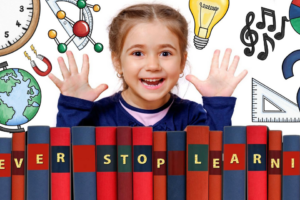
Home Spaces as Makerspaces

Makerspaces are becoming the fastest growing trend in STEM education. In fact, according to Popular Science, the worldwide community boasts nearly 1,500 active spaces that find their homes in schools, libraries, and community centers. So, what is a Makerspace? Generally speaking, a makerspace is central location where curiously creative individuals can share resources, work on projects, and build together. Broader than that, even, a Makerspace is simply a carved out, dedicated environment containing tools and materials whose end results are as innumerable as their imaginative ends. For most students, these spaces, which can be homegrown, can be ideal learning modes. And, given that the summer months are often a time of computational learning loss, creating a makerspace for your student may reinforce or promote greater paths to learning than would days of prolonged unstructured activity.
What’s the best kind of Makerspace?
The first step is in selecting a location. A Makerspace is, indeed, a dedicated space for making. Of course, not all homes are conducive to sectioning off an entire room for crafting and making; however, a true Makerspace is not determined by its size or even its sophistication, but rather by its location as being concentrated, geared specifically for engaging your student’s creative side.
What should my Makerspace feature?
For a young student, for example, an ideal space for crafting and creating is one that offers household items that are relatively safe and, conveniently enough, inexpensive. A short list of such items can include popsicle sticks, rubber bands, tape, and construction paper. While these materials can appear boring or uninteresting at first glance, they can unlock a world of creativity beyond the digital stratosphere. There are some great blogs that offer recommendations for transforming everyday household materials into wizarding math content tools.
For older students that are enthralled by carpentry and, by default, geometry, it might be best to invest in some minimally dangerous power tools, like handheld drills and electric saws. Additionally, perhaps one of the most timeless activities that continues to captivate students is the process of making their own instruments. DIY, the online community that connects kids, has impressive ongoing challenges, one of which is of students making electronic instruments, tasks that require considerable knowledge of physics, including mechanics, pressure, and intensities of sound waves.
If your budget allows, consider purchasing your student’s own 3D printer. Surprisingly, they’re not as expensive as you think. In fact, Amazon offers the XYZ Printing Da Vinci Minimaker 3D printer for less than $250 and can be beneficial to both younger and older students. 3D printers are revolutionizing all STEM industries and having an easily accessible machine for kids to use, both inside and outside the classroom, can have tremendous benefits.
The bottom line is that Makerspaces can be as rudimentary or as sophisticated as the bounds of financial and space restraints impose. While incorporating technology like 3D printers may offer greater levels of enrichment, there is still much to be learned from popsicle sticks and glue. Try carving out your own Makerspace for your student this summer and be amazed by his or her creations!
Written by Lindsay Reeves



